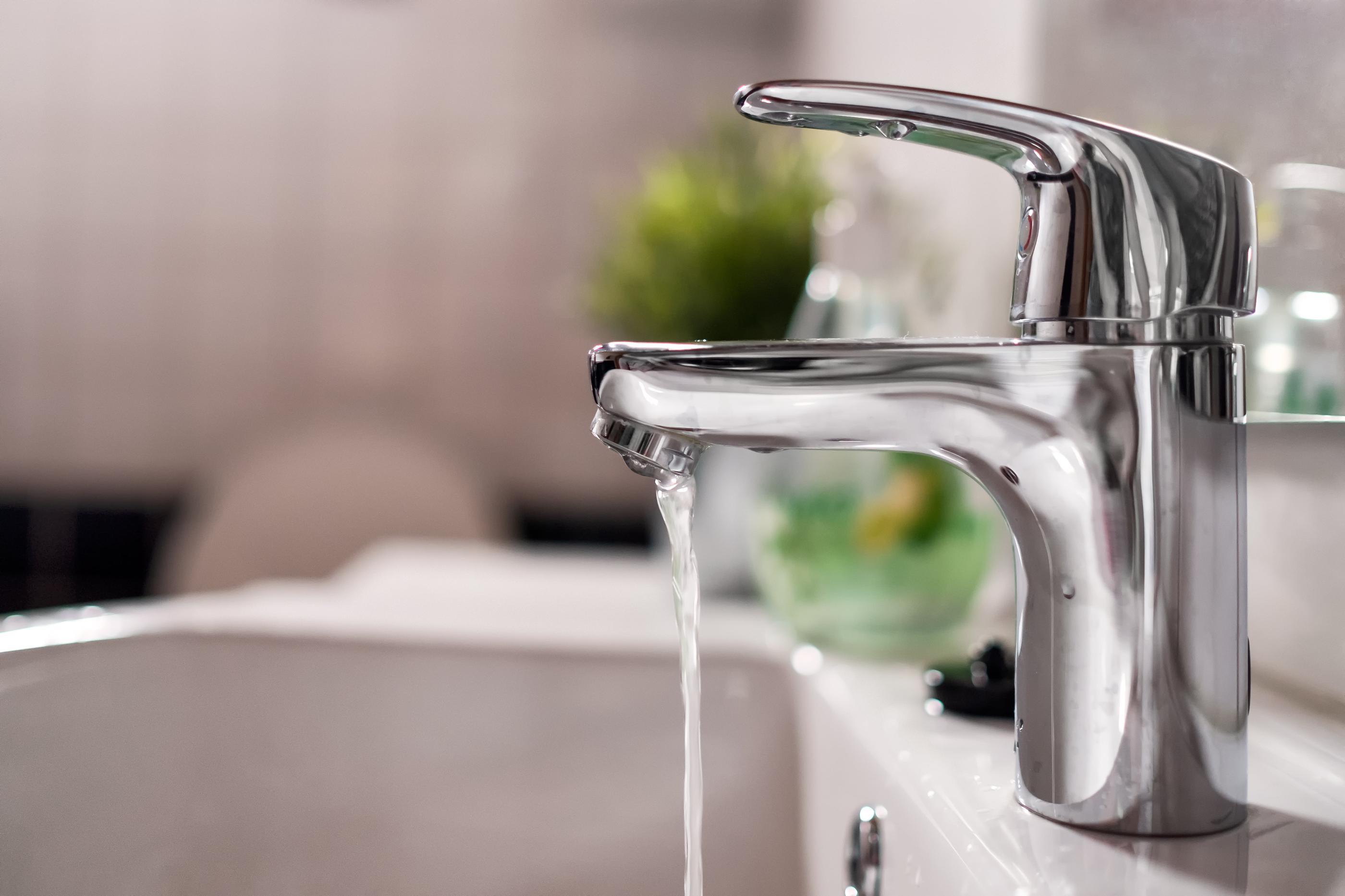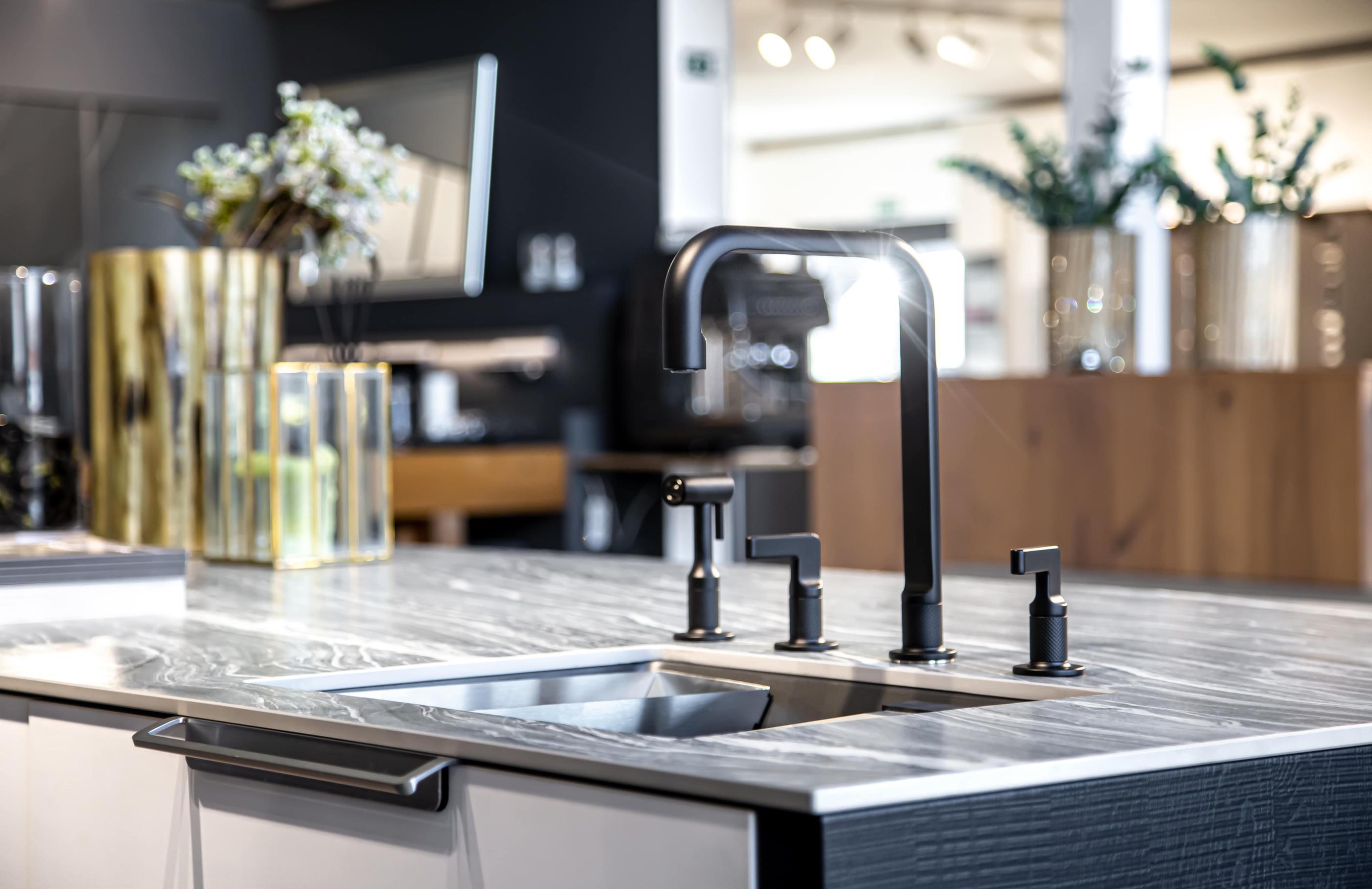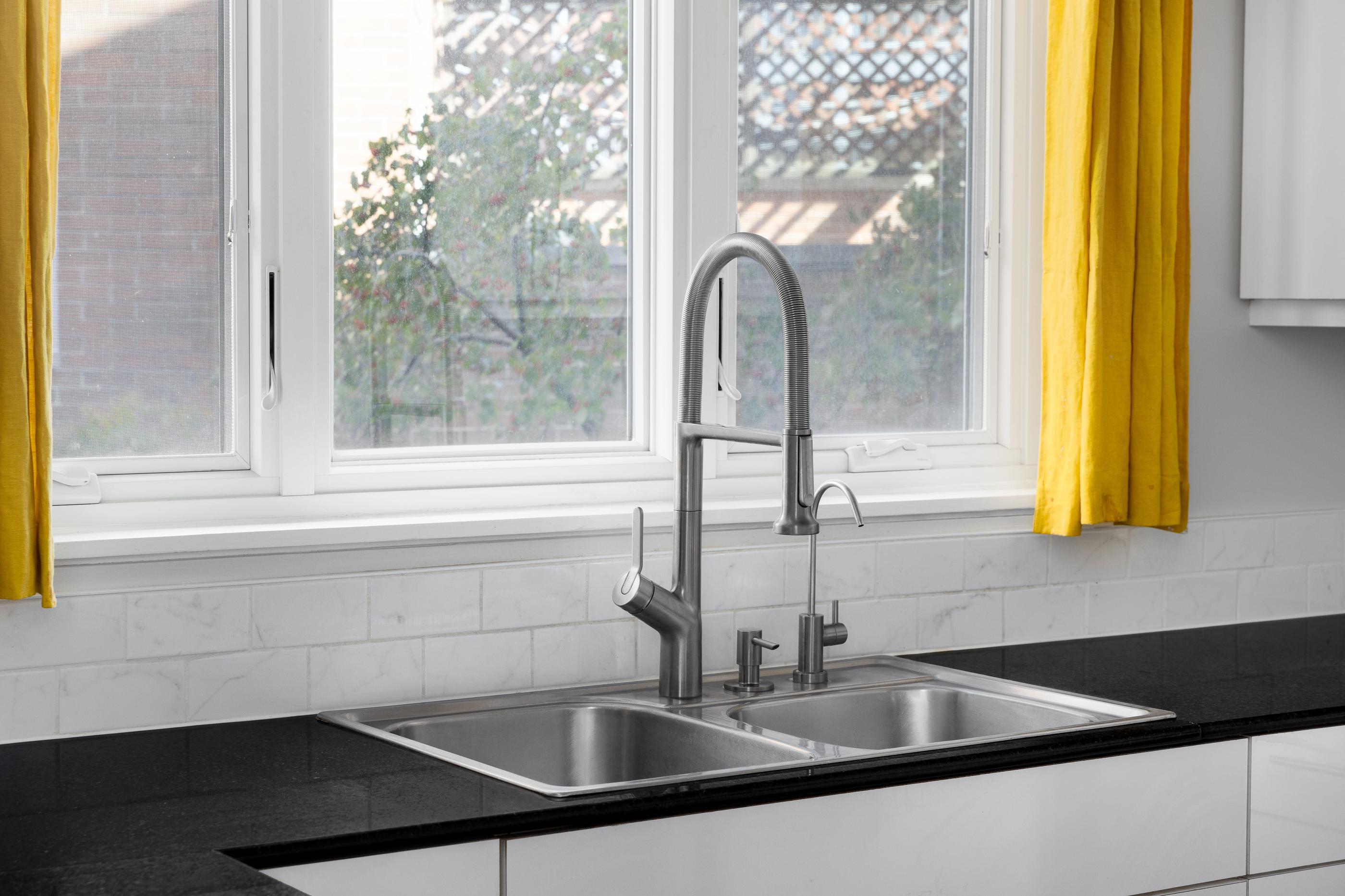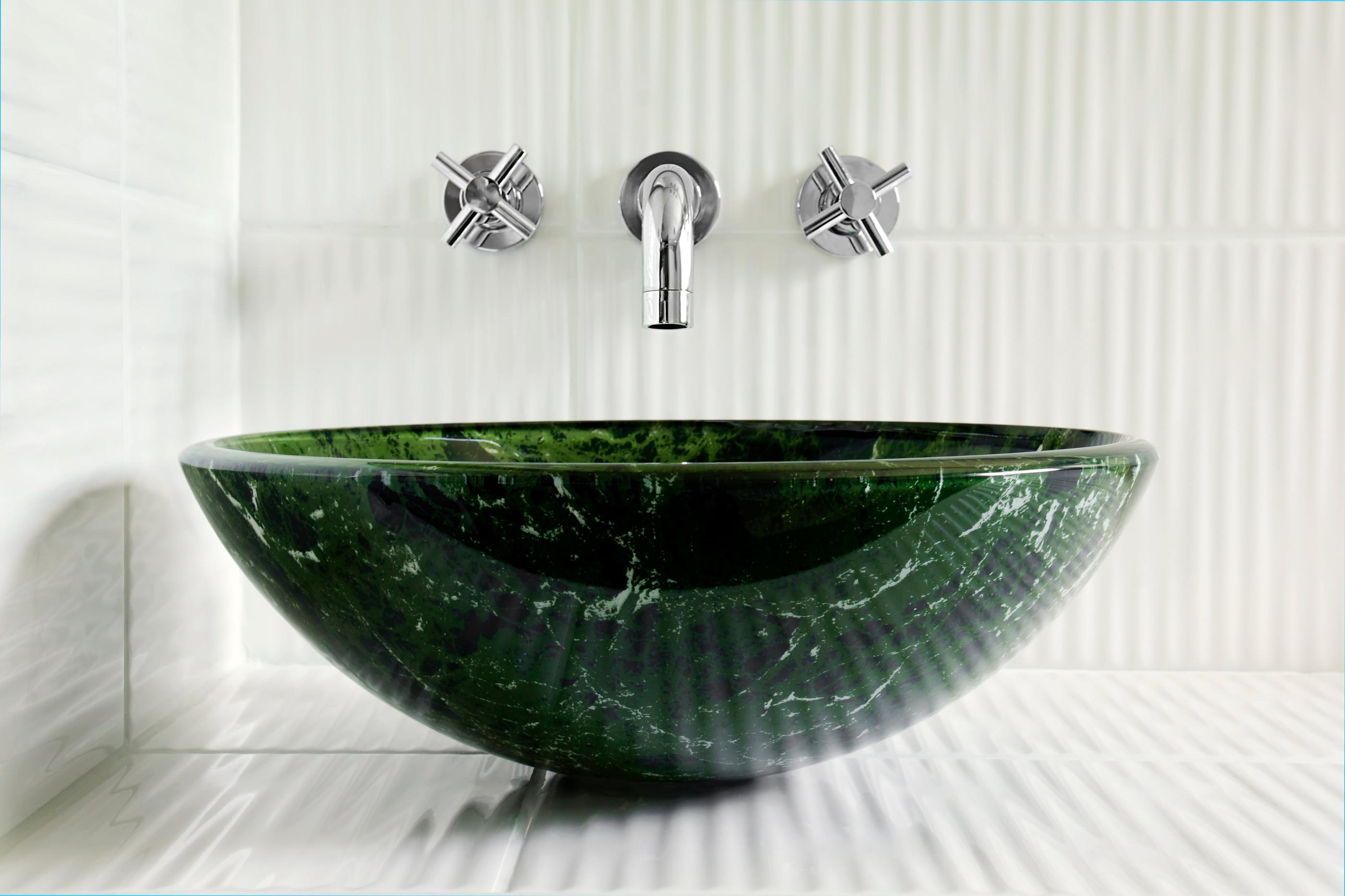Choosing the perfect sink and vanity for your bathroom remodel is fun. Finally getting that huge apron sink and stone countertop for your kitchen is a dream. Choosing the faucet is just a minor detail, right?
Definitely not. Your cabinetry and counters may stand out more, but these functional details are what really bring your design vision home. They’re also one of the only features you will physically handle every day. What follows is by no means a comprehensive list, but today, we have several types of faucets to consider for your kitchen or bath.

Single-handle faucet
What it is: Single-handle faucets feature one lever that controls the amount of water and temperature. Moving the lever up and down adjusts the flow. Moving it left (hot) or right (cold) adjusts the temperature.
Many classic single-handle faucets are ball valve fixtures; the handle rotates and moves atop a ball-shaped assembly. There are great benefits to this type of faucet, but it is more prone to leaking and hard water stains.
Where to put it: These are one of the most popular styles available and come in a huge range of sizes and finishes. They work for both the kitchen and bath. Simpler, mass-market models are pretty much standard in builder-grade homes.
Advantages: Easy adjustability and one simple control make it good for those with mobility issues. Many of your most affordable options will be single-handle faucets.

Modern single-handle faucet
What it is: Manufacturers have improved upon the basic ball valve, single-handle faucet by updating it to ceramic. From there, they’re creating cleaner lines for contemporary bathrooms. This gives you the familiar function with an upscale look.
It is the ideal trade-up if you want to replace a builder-grade single-handle, but would prefer to retain that one-piece, center-set design.
Where to put it: Streamlined top-lever faucets like this make better bathroom fixtures. They’re the popular choice for vessel sinks that sit atop a vanity.
Advantages: Easy to use, improved valve, luxury looks and styles available.

Ceramic disk faucet
What it is: A bit more elegant in appearance and sensitive to the touch. That’s what you’ll get if you opt for a ceramic disk faucet. Here, the flow and temperature are controlled by a ceramic disk instead of a ball or cartridge. This type of assembly requires less friction and a more durable material for a longer life.
The enhanced quality frequently extends to its appearance. Ceramic disk faucets come in a more contemporary, aesthetic range of styles and finishes. Many prefer the dramatic arc of the spout compared to most one-lever models.
Where to put it: Good for both kitchens and bathrooms, but more commonly seen in bathrooms. A worthy pick for freestanding tubs where you want precise temperature control and the attractive arc shape.
Advantages: Excellent sensitivity for accessibility and low grip strength. More modern in appearance and technology. A must for extra-hot water-lovers who need a durable, longer-lasting composition.

Widespread faucets
What it is: Widespread faucets are comprised of three to four main components. A standalone spout, a handle on either side for hot and cold water, and optionally, a sprayer. These are usually ceramic cartridge-style faucets, so you can expect enhanced durability and quality.
Instead of being mounted on a shared above-counter base, the handles and spout protrude from holes in the counter. This allows you to customize their precise placement as well as give a cleaner, more high-end look.
Where to put it: Since the parts are spread out, they’re most common in kitchens. However, they’re still practical enough for a larger bathroom vanity.
Advantages: Ideal for more luxurious designs, a wide range of styles, and easier to clean than a big, one-piece fixture. Customizable component spacing allows for perfect proportions and visual balance.

Lavatory faucets
What it is: “Lavatory faucet” is a rather generic term that is today applied to more ornate, traditional-looking taps. They differ greatly in basic features, from valve type to handles.
The style above represents the best of designer-approved lavatory faucets. Two cross-style handles are the traditional configuration. This one even features separate spouts, a throwback to old plumbing.
Where to put it: It’s usually a bathroom faucet, hence the name. However, larger, more widespread models are a suitable stylistic pick for cottage, vintage, and traditional kitchens.
Advantages: The traditional styles are desired by those who value maximalist bathroom aesthetics. Many models are also relatively low flow for water conservation.

Pull-down faucets
What it is: Pull-down faucet types are characterized by detaching, retractable spouts that allow for concentrated spraying. Although models will vary, they typically feature a lever with a ceramic disk assembly.
The obvious draw is the ability to focus the spray while washing dishes or produce, as well as cleaning the sink. However, some users believe their models reduce water pressure.
Where to put it: Pull-down faucets are selected almost exclusively for kitchens as they’re designed to facilitate kitchen tasks.
Advantages: Suited to the larger, deeper sinks that are more popular today. Ceramic assemblies are of good quality, and there’s a versatile range of styles available.
Discuss your new fixtures with a professional designer.
You’re spoiled for choice when it comes to faucets for your bathroom remodel. There are countless options, but only a handful will be perfect for your design. Why not get feedback from a professional designer? At The Designery, your initial consultation is free.
“Highly recommend this Designery location for providing quality kitchen cabinet, countertop, and bathroom materials! The professional on-site also provided awesome customer service with attention to detail and helpful custom design services that stood out from our other options!”
–Ron, Designery client



